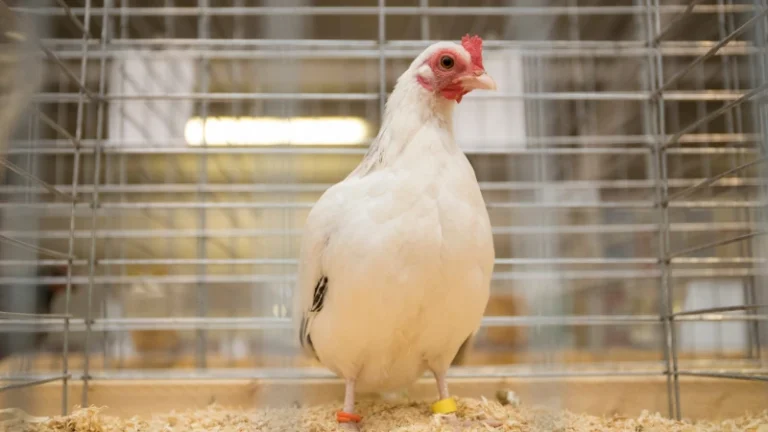Avian Influenza H5N1: A Persistent Threat Requiring Vigilance and Preparedness
The avian influenza virus H5N1, commonly known as bird flu, continues to pose a concern for both human and animal health. While human cases in the United States have remained relatively low, with only 70 reported instances, the virus persists in wild bird populations, particularly migratory birds, which serve as primary carriers. This persistent presence in avian populations necessitates ongoing surveillance and preventative measures to mitigate the risk of spillover events to humans and domestic animals.
The cyclical nature of migratory bird patterns influences the risk of H5N1 transmission. While current migratory bird movement is minimal, experts anticipate a resurgence in transmission risk as these movements increase in the fall. Backyard poultry owners, especially those residing along prominent migratory bird flyways, are particularly vulnerable. Direct or indirect contact between domestic poultry and infected migratory birds can lead to outbreaks in backyard flocks. This underscores the importance of biosecurity measures for poultry owners to prevent contact with wild birds and their droppings.
Transmission of H5N1 to humans and other mammals, such as dogs and cats, typically occurs through contact with infected bird feces or carcasses. While properly handled and prepared eggs, milk, and chicken meat are generally safe for consumption, raw milk and poultry products pose a significant risk and should be avoided. Public health officials emphasize the importance of hygiene practices, such as handwashing after handling birds or visiting areas frequented by them.
Recognizing the multifaceted nature of the threat, the University of Florida’s Institute of Food and Agricultural Sciences (UF/IFAS) has launched a comprehensive H5N1 education and outreach program. This initiative targets various stakeholders, including consumers, backyard poultry keepers, agricultural professionals, and even organizers of county fairs and livestock shows. The overarching goal is to equip individuals with the knowledge and resources necessary to protect themselves, their animals, and their communities from this potentially devastating virus.
UF/IFAS Extension personnel are undergoing specialized training on bird flu to effectively address concerns from farmers and consumers. This training empowers them to provide accurate and up-to-date information on H5N1 prevention, detection, and management. In addition, collaborative efforts are underway to develop biosecurity guidelines for county fairs and livestock shows, aiming to minimize the risk of disease outbreaks in these settings. These guidelines include a series of questions for fair organizers to pose to participants, fostering proactive preparedness and facilitating rapid response in case an outbreak occurs.
Webinars and other outreach activities are being conducted to keep the agricultural sector informed about the latest H5N1 developments and available resources. These initiatives provide critical updates on the evolving situation and ensure that farmers and other agricultural professionals have access to the latest best practices for safeguarding their operations and livestock. The ultimate goal of these comprehensive outreach efforts is to create a well-informed public capable of making sound decisions to protect their health and the health of their animals. This proactive approach emphasizes the importance of collaboration, education, and preparedness in mitigating the risks posed by avian influenza H5N1.
The UF/IFAS outreach campaign is a crucial step in addressing the ongoing threat of H5N1. By educating the public and empowering various stakeholders with the necessary tools and knowledge, the program aims to minimize the impact of this virus on human and animal health. This collaborative approach recognizes the interconnectedness of human, animal, and environmental health, and emphasizes the importance of a unified front in combating this persistent challenge.
The program’s multi-pronged approach, targeting various sectors of the community, demonstrates a commitment to comprehensive disease prevention and management. The training of Extension personnel ensures that reliable information is disseminated to those who need it most. The development of biosecurity guidelines for fairs and livestock shows addresses a potential vulnerability in the agricultural sector, while the ongoing webinars and outreach activities keep the agricultural community informed about the latest developments and best practices.
The focus on public education underscores the importance of individual responsibility in preventing the spread of H5N1. By empowering individuals with the knowledge they need to make informed decisions, the program fosters a culture of preparedness and proactive health management. This proactive approach is crucial in mitigating the risk of future outbreaks and protecting both human and animal populations.
The continued presence of H5N1 in wild bird populations necessitates ongoing vigilance and proactive measures. The UF/IFAS outreach program serves as a model for effective public health intervention, demonstrating the power of collaboration, education, and preparedness in addressing complex health challenges. As migratory bird patterns change and the risk of transmission fluctuates, programs like this are essential for maintaining public awareness and ensuring a coordinated response to the ongoing threat of avian influenza.
The UF/IFAS initiative recognizes that the fight against H5N1 is a collective effort, requiring the participation of individuals, communities, and various sectors of society. By working together and sharing vital information, we can create a safer and healthier environment for both humans and animals. The ongoing monitoring of H5N1 in wild bird populations, coupled with robust public health outreach programs, is essential for minimizing the risk of future outbreaks and protecting the health and well-being of all. This collaborative approach exemplifies the power of proactive public health interventions in safeguarding communities from emerging infectious diseases.


